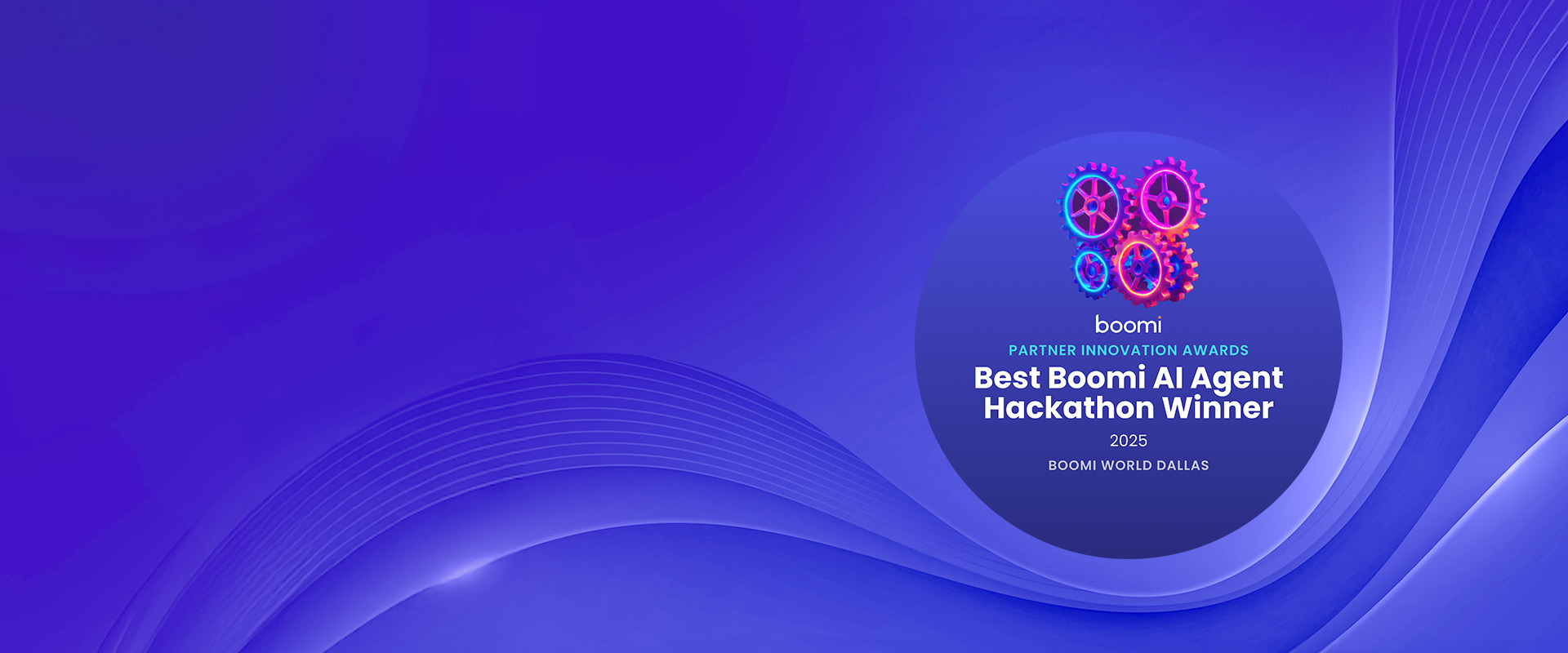Salesforce and SAP are two of the most widely used enterprise software systems, but SAP and Salesforce integration can be complex. Salesforce is a customer relationship management (CRM) system used to manage customer interactions and data. And SAP is an enterprise resource planning (ERP) system typically used to manage a company's back-end operations, such as financials, logistics, and HR.
Despite the differences in their primary functions, there are many scenarios where SAP and Salesforce integration can bring significant benefits to an organization:
Why Integrate SAP and Salesforce - The Benefits
Streamlined business processes
Integrating Salesforce CRM and SAP ERP can eliminate manual processes and data entry, resulting in more efficient and effective business processes.
Improved data accuracy and visibility
By bringing data from the CRM and ERP systems into a single platform, organizations can get a more complete and accurate view of their business and make better-informed decisions.
Increased efficiency
By automating processes and eliminating the need to switch between multiple systems, organizations can save time and increase productivity.
SAP and Salesforce Integration Challenges
However, there are also several challenges that organizations may face in Salesforce SAP integration.
- Data mapping: Different systems often have different data structures and formats, making it difficult to map data between them.
- Data synchronization: Ensuring that data is kept up-to-date and consistent between the two systems can be challenging.
- Security: Ensuring that data is protected and secure when transferring it between the systems.
- Customization: Customizing the integration to meet the organization's specific needs can be complex.
- Lack of skillsets: One of the biggest challenges organizations may face when integrating SAP, and Salesforce is the need for more skillsets to perform the integration effectively. Integrating two complex enterprise systems like SAP and Salesforce requires specialized skills, including knowledge of the systems, data mapping, and integration techniques, and project management. Lack of skillsets can lead to delays in the integration process and increased risk of errors and issues.
To mitigate these challenges and ensure a smooth and successful implementation, it is important to carefully plan, architect, design, develop and test the integration. Working with a partner with expertise in integrating SAP and Salesforce can help ensure that the integration is completed successfully and efficiently.
One approach for integrating Salesforce and SAP is to use an Integration Platform as a Service (iPaaS) solution, such as Boomi or MuleSoft. iPaaS solutions provide a platform for building, deploying, and managing integrations between different systems and applications.
Integration patterns used for integrating Salesforce and SAP
- File-based integration: In this pattern, data is transferred between Salesforce and SAP using files, such as CSV or Excel files. The data is extracted from one system, transformed as necessary, and then loaded into the other system using tools such as file transfer protocol (FTP) or email.
- API-based integration: This pattern involves using APIs to transfer data between Salesforce and SAP in real time. The data is extracted from one system, transformed as necessary, and then passed to the other system via an API call. This approach is suitable for transferring smaller volumes of data or for integrating systems that need to be updated in near real-time.
- Event-based integration: In this pattern, events in one system trigger the transfer of data to the other system. For example, an event such as a new customer being created in Salesforce could trigger the creation of a corresponding customer in SAP. This approach is suitable for integrating systems that need to be updated in real-time or near real-time.
- Batch integration: This pattern involves transferring data between Salesforce and SAP in batch mode at regular intervals. The data is extracted from one system, transformed as necessary, and loaded into another in a batch process. This approach is suitable for transferring large volumes of data and can be easily automated using tools such as scheduled tasks.
- Synchronous integration: In this pattern, the two systems are integrated in real-time, with data being transferred between the systems as it is entered or updated. This approach is suitable for integrating systems that need to be updated in real-time or near real-time.
The most appropriate pattern will depend on the specific requirements and objectives of the integration, as well as the architecture and data structures of the two systems.
Using an iPaaS solution, such as Boomi or MuleSoft, can help to expedite the implementation of the integration and reduce the complexity of the integration process. An experienced certified iPaaS implementation partner like Jade Global can provide expertise and guidance on the best approach and tools for integration, as well as help to ensure that the integration is completed successfully.
Use Cases of Salesforce and SAP Integration for Businesses
- Sales order management: An organization might integrate SAP and Salesforce to manage the sales order process. In this scenario, Salesforce would be used to capture customer orders, and SAP would be used to process the orders and manage inventory and fulfillment. The integration would involve transferring data such as customer information, product details, and order quantities between the two systems.
- Customer service: An organization might integrate SAP and Salesforce to manage customer service inquiries and requests. In this scenario, Salesforce would be used to manage customer interactions, such as phone calls and emails, while SAP would be used to manage customer data and process requests. The integration would involve transferring data such as customer information, request details, and resolution information between the two systems.
- Supply chain management: An organization might integrate SAP and Salesforce to manage the supply chain process. In this scenario, Salesforce would be used to manage customer orders and demand, while SAP would be used to manage inventory, production, and fulfillment. The integration would involve transferring data such as customer orders, inventory levels, and production schedules between the two systems.
- Financial reporting: An organization might integrate SAP and Salesforce to generate financial reports. In this scenario, Salesforce would be used to capture sales data, while SAP would be used to manage financial data such as expenses and revenue. The integration would involve transferring data such as sales data, expense data, and revenue data between the two systems to generate financial reports.
In conclusion, SAP and Salesforce integration can bring significant benefits to an organization, including streamlined business processes, improved data accuracy and visibility, and increased efficiency.
However, it is important to carefully plan and test the integration to mitigate the challenges that may be encountered. Using an iPaaS solution and working with an experienced iPaaS partner can help to ensure a smooth and successful implementation.













